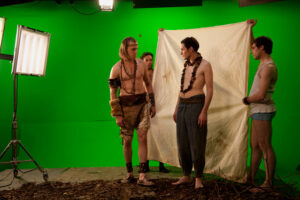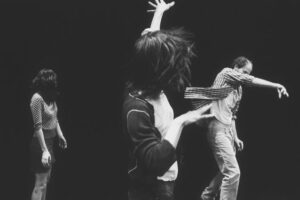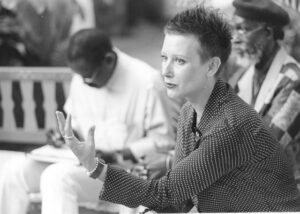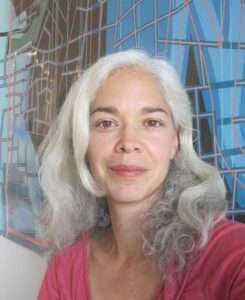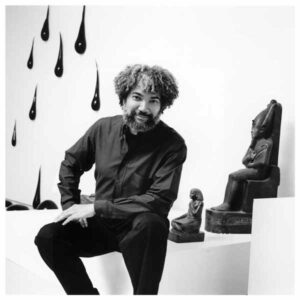International symposium / Screenings / Performances
musée du quai Branly & Centre Pompidou
May 26-27-28, 2012
Curated by : Aliocha Imhoff, Morad Montazami, Kantuta Quiros
Menu
Saturday, May 26, 2012
Symposium - 10am-6pm - musée du quai Branly
With contributions from Ariella Azoulay, T.J. Demos, Faye Ginsburg,
George Marcus, Karen Mirza & Brad Butler, Trinh T Minh Ha
Performance - 8pm - Centre Pompidou
The Personal Effects of Theo Grünberg (2011) by Simon Fujiwara
Sunday, May 27, 2012
Symposium - 10 am - 6 pm - musée du quai Branly
With contributions from Peggy Buth, Clementine Deliss, Jennifer Gonzalez, Joachim Koester, Benoit de Lestoile, Maureen Murphy, Fred Wilson
Projection - 8pm - Centre Pompidou
Why Is Yellow the Middle of the Rainbow ? by Kidlat Tahimik (1981-1993)
Monday, May 28, 2012
Screening - 8pm - Centre Pompidou
Experimental Ethnographies
Camille Henrot, Luis Ospina & Carlos Mayolo, Dias & Riedweg, Jorge Preloran, Francis Alÿs
Sunday 27th May 2012
Musée du quai Branly
Symposium/Debates – 10am to 6pm
Free entrance, Auditorium
10am – Fiction and narratives
From the 1980’s and since the first artistic appropriations of « inquiry » form and rethoric, the blurring of the limit between real and fiction, subject and object, the « I » and the « others » inhabiting him, has often been stressed. When artistic exhange with ethnography’s narrative apparatus gains intensity, then we can also see it as a montage between genres (autobiography, allegory, theory, inquiry…), subversion of the authorship and the « identities » at stake, various forms of intercultural translations, etc.
Moderator : Sébastien Pluot, art critic, curator, Ecole Supérieure des Beaux-Arts d’Angers
Peggy Buth, born 1971 in Berlin, studied at the Academy of Visual Arts Leipzig and at Saint Martins College in London. Her works have been shown internationally, including at the Brussels Biennial (2008) and at the exhibition “Made in Germany” in Hanover (2007).. In her artistic work, Buth explores the representational systems of art, literature, politics, history, and science, with an emphasis on what is being repressed and what unintentionally comes to light in these spheres. In so doing she employs the media of photography and video, uses tar, shellac, or carpet in creating her pictures, works with found materials, language, and sound, produces objects, sculptures, and installations. The project “Desire in Representation” (2008) is based on extensive research conducted by the artist on the Royal Museum for Central Africa in Tervuren (near Brussels). The museum, having opened in 1910, has served as a showcase for Belgian colonial history. In accordance with changes in property ownership conditions in the Congo up until its independence, the representational means employed by the Tervuren Museum were likewise modified. Since 2004 the museum has been immersed in a process of spatial and conceptual reorganization that is still going on today. Buth presents photographs of various rooms and displays at the museum and points out the ways in which meaning and historicity are created there.
Of Spirits and Empty Spaces
Joachim Koester (b. 1962 in Copenhagen) is a conceptual artist and a graduate of the Royal Danish Academy of Art in his native city. Joachim Koester participated in Documenta 10 in Kassel (1997) and in the Venice Biennial (2005). He has had numerous solo and group exhibitions around the world. Recent monographic exhibitions were held at Museo Tamayo, Mexico City (2010), Kestnergesellschaft, Hanover (2010), Turker Art Museum, Finland (2009) and Moderna Museet, Stockholm (2007) and in France, in particular at Centre National de la Photographie, Paris (2001) and IAC Villeurbanne (2012).
Joachim Koester draws on the duality of the scientific relationship with the real and sensitive experience. Thus the representation as photos or film of places full of history and then deserted to which he turns often accomplishes this voluntary abolition of the frontiers between rationality and empiricism.
Joachim Koester (b. 1962 in Copenhagen) is a conceptual artist and a graduate of the Royal Danish Academy of Art in his native city. Joachim Koester participated in Documenta 10 in Kassel (1997) and in the Venice Biennial (2005). He has had numerous solo and group exhibitions around the world. Recent monographic exhibitions were held at Museo Tamayo, Mexico City (2010), Kestnergesellschaft, Hanover (2010), Turker Art Museum, Finland (2009) and Moderna Museet, Stockholm (2007) and in France, in particular at Centre National de la Photographie, Paris (2001) and IAC Villeurbanne (2012).
Joachim Koester draws on the duality of the scientific relationship with the real and sensitive experience. Thus the representation as photos or film of places full of history and then deserted to which he turns often accomplishes this voluntary abolition of the frontiers between rationality and empiricism.
1pm – Museum, archives, exhibition
Artists’ challenging intercourses with the museum are far from beginning nowadays. But the ones with ethnography museum and memory are even more specific. They question the museum as didactic, historiographic and political apparatus. In echo to the reflections of anthropologists themselves (at least since Georges Bataille’s famous journal, Documents), on the reification of cultures, the fetishism of the « primitive » etc. artists engage in display strategies and museological counter-inquiries. History of the gaze and exhibition of knowledge intertwines in order to put in crisis the colonial heritage of the museum and its own narratives of the Other. Thus they help imagine what the post-ethnographic museum may look like ?
Moderation: Patricia Falguières, art historian and art critic, EHESS
Trading perceptions in a post-ethnographic museum
Clémentine Deliss is curator, researcher, publisher and Director of the Museum of World Cultures in Frankfurt am Main, where she curated recently the exhibition ‘Object Atlas’ (2011). Clementine Deliss studied art and social anthropology in Vienna, and holds a PhD from the School of Oriental and African Studies, University of London. From 1992 to 1995 she was artistic director of africa95, a contemporary arts festival coordinated with the Royal Academy of Arts, London. Since 1996 she is producer and publisher of the writers’ and artists’ organ Metronome, that was launched at places such as the Dakar and Venice biennales, Kunsthalle Basel and documenta X and 12 in Kassel. Since 2003 Clémentine Deliss was director of Future Academy at the Edinburgh College of Art with research cells in Senegal, India, Europe, Australia, USA, and Japan. In 2007 she established Randolph Cliff, an artists’ residency programme in Edinburgh together with Edinburgh College of Art, The National Galleries of Scotland, and patron Charles Asprey. She recently curated
Clémentine Deliss is curator, researcher, publisher and Director of the Museum of World Cultures in Frankfurt am Main, where she curated recently the exhibition ‘Object Atlas’ (2011). Clementine Deliss studied art and social anthropology in Vienna, and holds a PhD from the School of Oriental and African Studies, University of London. From 1992 to 1995 she was artistic director of africa95, a contemporary arts festival coordinated with the Royal Academy of Arts, London. Since 1996 she is producer and publisher of the writers’ and artists’ organ Metronome, that was launched at places such as the Dakar and Venice biennales, Kunsthalle Basel and documenta X and 12 in Kassel. Since 2003 Clémentine Deliss was director of Future Academy at the Edinburgh College of Art with research cells in Senegal, India, Europe, Australia, USA, and Japan. In 2007 she established Randolph Cliff, an artists’ residency programme in Edinburgh together with Edinburgh College of Art, The National Galleries of Scotland, and patron Charles Asprey. She recently curated
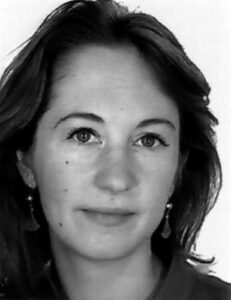 Maureen Murphy, art historian, University Paris I, Paris
Maureen Murphy, art historian, University Paris I, ParisL’invention de « l’art contemporain africain »
Historienne de l’art, Maureen Murphy a publié différents travaux sur la réception et la représentation des arts d’Afrique en Occident, sur les liens entre ces derniers et l’art moderne ainsi que sur « l’art contemporain africain ». Elle est aujourd’hui chargée de mission pour les expositions et les collections d’art du XIXe et du XXe siècle à la Cité nationale de l’histoire de l’immigration à Paris. Elle a récemment publié (2009) aux presses du Réel De l’imaginaire au musée – Les arts d’Afrique à Paris et à New York (1931-2006) : une mise en perspective historique de la représentation des arts extra-occidentaux dans les musées et dans l’imaginaire occidental, un point de vue comparatif avec les Etats-Unis et une mise en lumière des liens entre arts d’Afrique et avant-garde. L’ouverture, en France, aux débats post-coloniaux développés jusqu’alors essentiellement dans les pays anglo-saxons, la création de la Cité nationale de l’histoire de l’immigration (2007) ou l’intérêt croissant pour l’art contemporain « africain », soulèvent autant de questions qui nécessitent d’être replacées dans l’histoire des rapports politiques, économiques, culturels et idéologiques entretenus par l’Occident avec l’Afrique. Dépassant les frontières hexagonales, cet ouvrage adopte un point de vue comparatif avec les Etats-Unis et revisite les liens entre arts d’Afrique et avant-garde. En croisant une analyse des politiques culturelles françaises et américaines avec une relecture du primitivisme et du modernisme, cet ouvrage démontre que New York ne « vola » pas seulement « l’idée d’art moderne », comme l’écrivit Serge Guilbaut, mais également celle de l’art africain.
Face of the Object, Skin of the Archive
Jennifer Gonzalez writes about contemporary art with an emphasis on installation art, digital art and activist art. She is interested in understanding the strategic use of space (exhibition space, public space, virtual space) by contemporary artists and by cultural institutions such as museums. More specifically, she has focused on the representation of the human body and its relation to discourses of race and gender. Gonzalez’s research has lead to a book project on the work of contemporary artists who use installation art as a way to stage a critical assessment of race politics in the United States, Subject to Display: Reframing Race in Contemporary Installation Art (Cambridge, MA: The MIT Press, 2008). In addition to installation art, Jennifer Gonzalez has written on contemporary digital art and specifically on the visual representation of the body. Several of her articles and book chapters focus on the cyborg body or the hybrid body as both symptoms of and metaphors for cultural transformation.
Jennifer Gonzalez writes about contemporary art with an emphasis on installation art, digital art and activist art. She is interested in understanding the strategic use of space (exhibition space, public space, virtual space) by contemporary artists and by cultural institutions such as museums. More specifically, she has focused on the representation of the human body and its relation to discourses of race and gender. Gonzalez’s research has lead to a book project on the work of contemporary artists who use installation art as a way to stage a critical assessment of race politics in the United States, Subject to Display: Reframing Race in Contemporary Installation Art (Cambridge, MA: The MIT Press, 2008). In addition to installation art, Jennifer Gonzalez has written on contemporary digital art and specifically on the visual representation of the body. Several of her articles and book chapters focus on the cyborg body or the hybrid body as both symptoms of and metaphors for cultural transformation.
Benoit de L’ Estoile, anthropologist, CNRS, IRI, Paris
L’art est-il la fin de la science? un défi pour les musées
L’art est-il la fin de la science? un défi pour les musées
Benoît de L’Estoile, is an anthropologist who teaches at the École Normale Supérieure. He has just published Le goût des autres. De l’exposition coloniale aux Arts premiers (Flammarion, 2007). Among other volumes, he has edited Empires, Nations and Natives: Anthropology and State-Making (Durham: Duke University Press, 2005) with Federico Neiburg and Lygia Sigaud. In 2003, he curated “Nous sommes devenus des personnes”: Nouveaux visages du Nordeste Brésilien (“We have become persons”: New faces from the Brazilian Northeast) at the École Normale Supérieure and in Dijon . His recently published texts on related topics include “Le Musée de l’Homme, laboratoire de l’ethnologie (1937-2003),” in Les lieux de savoir, ed. Christian Jacob (Paris: Albin Michel, 2007), “From the Colonial Exhibition to the Museum of Man: An Alternative Genealogy of French Anthropology,” in Social Anthropology/Anthropologie sociale, 11:3 (October 2003) and “A Rationalization of Colonial Domination? Anthropology and Native Policy in French-Ruled Africa,” in Empires, Nations and Natives: Anthropology and State-Making (Durham: Duke University Press, 2005)
Fred Wilson was born in 1954 in the Bronx and lives in New York City today. He is a conceptual artist whose work often re-contextualizes existing art objects and cultural artifacts that portray the under-represented perspective of people of color. A large part of Wilson’s creative process involves conducting community outreach and research in the cities where he produces projects. His artistic practice raises questions and spurs dialogue about heated issues such as race in a smart and sensitive way. Wilson’s artwork has been shown around the world in solo and group exhibitions. While already an accomplished artist, his watershed project, “Mining the Museum: An Installation by Fred Wilson” as The Maryland Historical Society in Baltimore in 1992-1993 catapulted him into the consciousness of a much broader audience Wilson has received numerous awards and professional recognitions including the prestigious “Genius” award from the MacArthur Foundation in 1999. He was selected to represent the United States at the Venice Biennale in 2003. He is currently represented by Pace Gallery in New York.Fred Wilson was born in 1954 in the Bronx and lives in New York City today. He is a conceptual artist whose work often re-contextualizes existing art objects and cultural artifacts that portray the under-represented perspective of people of color. A large part of Wilson’s creative process involves conducting community outreach and research in the cities where he produces projects. His artistic practice raises questions and spurs dialogue about heated issues such as race in a smart and sensitive way. Wilson’s artwork has been shown around the world in solo and group exhibitions. While already an accomplished artist, his watershed project, “Mining the Museum: An Installation by Fred Wilson” as The Maryland Historical Society in Baltimore in 1992-1993 catapulted him into the consciousness of a much broader audience Wilson has received numerous awards and professional recognitions including the prestigious “Genius” award from the MacArthur Foundation in 1999. He was selected to represent the United States at the Venice Biennale in 2003. He is currently represented by Pace Gallery in New York.
